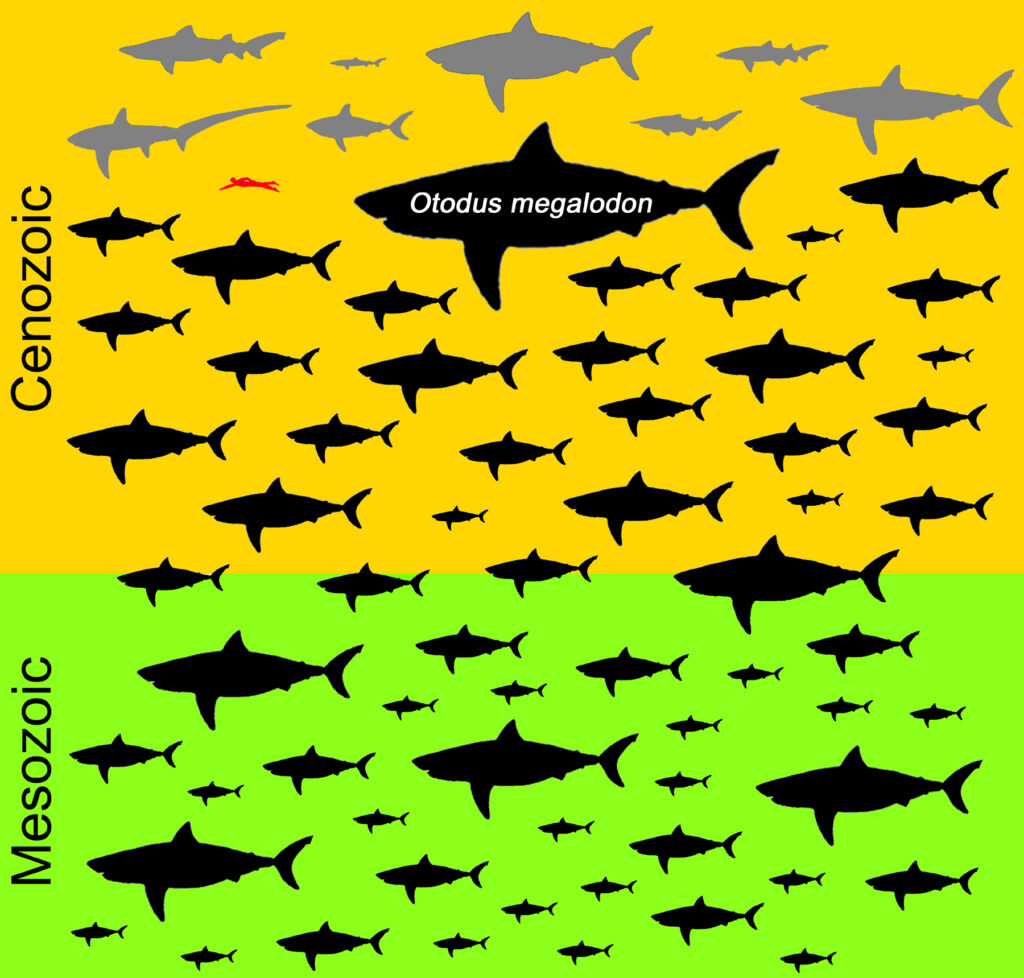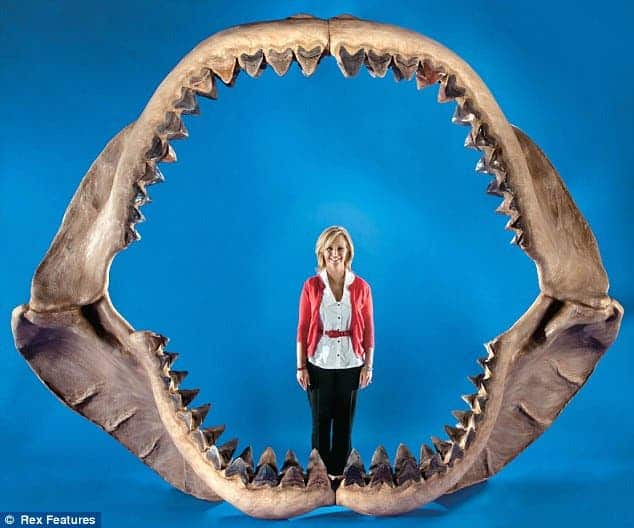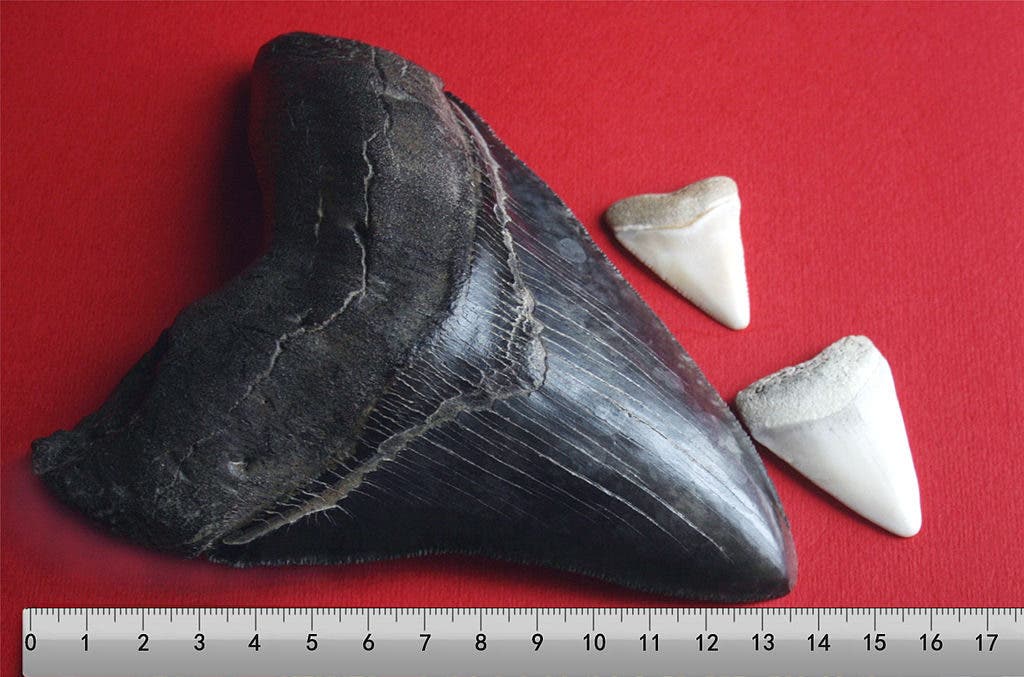
Sharks are among the most amazing creatures there are. Not only are they older than mammals and dinosaurs, their 450-million-year-old evolutionary history means that they even preceded trees! Perhaps the fiercest shark that ever swam the world’s oceans was Otodus megalodon, an extinct species of shark that lived from the early Miocene to the end of the Pliocene, between 23 to 2.6 million years ago.
If there’s one defining feature that Megalodon is remembered for, that would be its size. Huge is really an understatement. Although its exact size is still a matter of contention among paleontologists and shark experts, the fossil record suggests that Megalodon could exceed 15 meters (50 feet) in length. And, according to a new study published today in the journal Historical Biology, no other shark came close to it.
Megalodon: the uncontested king of the sharks

Like all sharks, Megalodon’s skeleton was mostly made of cartilage. This means that only its teeth and vertebrae have survived in the fossil record. But these are enough to infer many qualities about this fascinating ancient marine beast.
For more than two decades Kenshu Shimada, a professor of paleobiology at DePaul University in Chicago and research associate at the Sternberg Museum in Kansas, has been studying Megalodon teeth and gathering data from the scientific literature. Shimada’s aim was to plot Megalodon’s size and compare it to other sharks. What he found was truly shocking.
“The initial goal of this new study was to investigate the size distribution of sharks in the order Lamniformes over geologic time by developing a logical method to estimate the body, jaw, and dentition lengths from their teeth. We did expect Megalodon to be gigantic based on my previous study, but what surprised us was actually seeing in our data a 7-meter-gap [23-foot-gap] between the size of Megalodon and the size of the next largest non-planktiviorous (i.e. carnivorous sharks that don’t eat plankton) lamniforms not directly related to Megalodon in the entire geologic history,” Shimada told ZME Science in an email.
“The significance of this new study is that it represents the first collective analysis surveying the body sizes of all major lamniform shark lineages including both extinct and living forms. It demonstrates Megalodon was uniquely gigantic relative to other non-planktivorous sharks,” he added.

Image via Wikimedia.
Shimada estimated the size of various species of extinct lamniforms from the fossil record based on measurements taken from present-day, living non-planktivorous lamniforms. Also known as mackerel sharks, lamniforms include some of the most familiar species of sharks, such as the great whites.
After the tally was made, the researchers were amazed to find that the next runner up behind Megalodon was very far behind. While Megalodon’s size could exceed 14.1 meters (46 feet), all other sharks, including extinct species, generally capped at 7 meters in length (23 feet).
Some plankton-eating sharks came close to Megalodon, such as whale sharks and basking sharks, however, carnivorous sharks were far behind. The exact reasons why are yet unclear.
“There are still so many fundamental questions about Megalodon scientists are still trying to answer. While Megalodon bite marks on marine mammal bones are known, whether they represent predatory attacks or scavenging activities are still unknown. Related to our new study, exactly how large Megalodon could have reached remains uncertain where, at present, the scientifically justifiable maximum length estimates are in the range of 14.1-15.3 meters (46-50 feet). The validity of a recent study on the body form of Megalodon also needs to be tested or substantiated. This does mean that individuals larger than 15.3 meters did not exist, but simply the existence of such over-sized individuals has not been substantiated in the realm of science yet. Among many other questions, exactly why Megalodon became extinct also remains to be a big unanswered question,” Shimada said.
According to the study, lamniformes were well represented in the late Mesozoic-Cenozoic fossil record, a time during which they showed remarkable diversity and specialization. And since most of them were carnivores, the researchers assert that these ancient lamniforms must have played a major role in the evolution of marine ecosystems throughout geological time.
“The fossil record is a window into the evolution of ecosystems, and understanding why species become extinct, and how their rise and demise affected their ecosystem is critical to today’s oceans for issues like conservation of organisms, habitat preservation, and sustainable marine natural resources. Elucidating ecological variables as simple as the body size of organisms, especially carnivores like sharks in our new study, is the first step. While much of the attention has been given to the question, “Why Megalodon evolved to be so large?”, our new study has provided another way of thinking about the issue for future scientific studies, that is to ask ‘Why all other non-planktivorous lamniforms have had a general size limit of 7 meters [23 feet]?'” Shimada concluded.









